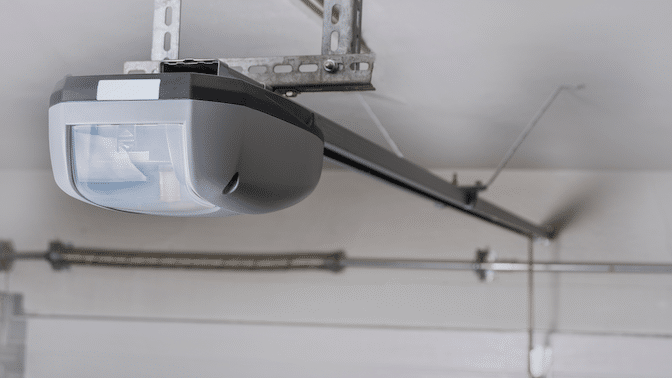Automatic garage door openers have several advantages over traditional, manual garage doors, including the ability to open and close the door without exiting your car. Like any mechanical system, however, automatic garage doors can break down, especially if they aren’t properly maintained.
If your garage door breaks or malfunctions it can not only inconvenience you, but it can also pose a safety hazard. In the event of an equipment failure, the following steps are a good starting point to help you identify and fix the problem.
Troubleshooting Your Garage Door Remote
If your garage door isn’t working properly, start by checking the garage door remote. If your remote isn’t working, try replacing the battery. If, after replacing the battery, the remote still doesn’t work, check the door’s keypad (if you have one). If the keypad works, the remote is the likely source of the problem. If you determine the remote is not the source of the malfunction or service on the remote hasn’t solved your problem, you’ll need to examine the opener itself.
Troubleshooting Your Garage Door Opener
Automatic garage door openers are complex machines with many moving parts, each of which could be the cause of a malfunction. When troubleshooting your garage door opener, start by examining the following parts:
Power Supply
Automatic garage door openers will not open or close if the power system is interrupted.
Photo Eye
The photo eye ensures the garage door stops when an object or person passes under it, preventing accidents and injuries. If the photo eye’s lenses are misaligned, dirty, or blocked, the system won’t function properly.
Rollers
The rollers allow the garage door to travel up and down the door’s tracks. If the rollers are dirty or stuck, the door may become lodged in the open or closed position.
Motor
If the door’s motor is burned out or its plugs are loose or snagged, the door may fail to open or close at all.
Up-Limit Switch
The up-limit switch controls how far the motor pulls the garage door during opening. Under normal circumstances, the switch prevents the motor from dragging the door off track during regular operation. If the door is only partially opening, or the motor keeps running after the door is open, the up-limit switch might be positioned too close or too far away from the motor.
Close-Limit Switch
Similar to the up-limit switch, the close-limit switch is designed to prevent the motor from forcing the garage door into the ground during closing. If the door doesn’t close completely, the close-limit switch might be set incorrectly and need to be adjusted.
Close-Force Screw
The close-force screw controls how much downward force the door exerts before the motor switches off. If the door is reversing before it touches the floor or immediately reversing after touching the floor, then the close-force screw may need to be adjusted.
Springs and Cables
If the door isn’t opening at all, the torsion spring or extension springs or cables may be damaged or off track.
Garage Door Tracks
If the door isn’t opening at all and is making loud grinding noises, it may be that the door is off track.
Rely on the Experts at American Door Works
If you notice any issues with your automatic garage door opener that require service or replacement parts, call on a team of professionals like American Door Works. Our experts will travel to you to provide comprehensive troubleshooting and service to a wide range of garage door brands.
Contact us to get your garage door back in working order in no time!


